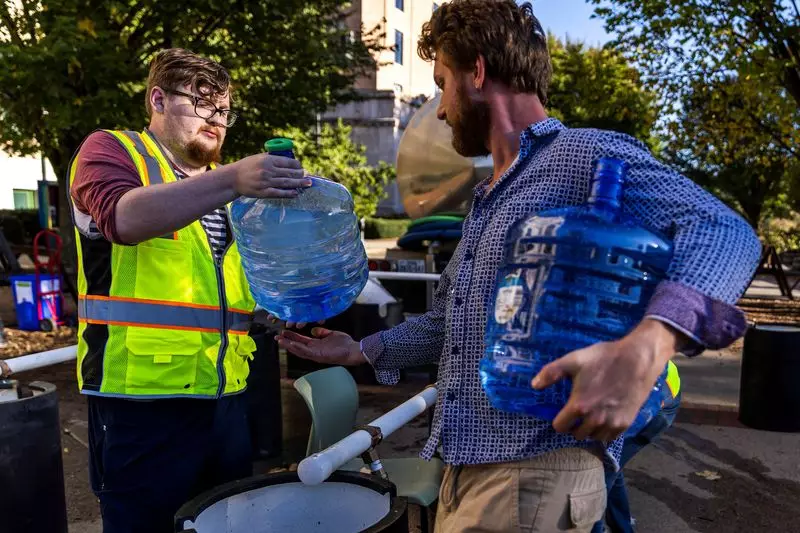In the wake of Hurricane Helene’s devastating impact on the Southeast, particularly in North Carolina, the reality of life without essential services has struck tens of thousands of residents. As communities grapple with the aftermath, the challenges of securing clean water stand at the forefront, overshadowing the initial hope for quick recovery.
Hurricane Helene made landfall in Florida with immense energy, identified as a powerful Category 4 hurricane. Its effects rippled through the region, leaving a trail of destruction in its wake. With more than 180 confirmed fatalities across multiple states, the humanitarian crisis in North Carolina grows graver by the hour. Asheville, a vibrant city known for its culture and community spirit, has been severely affected. The storm not only created catastrophic flooding but also compounded existing vulnerabilities within the local infrastructure, leading to significant water supply disruptions for approximately one-fifth of its population.
Water Supply Crisis
Six days post-hurricane, residents in western North Carolina found themselves facing an escalating water crisis. In Asheville alone, where the municipal water system services over 150,000 individuals, extensive damage to water pipes and treatment facilities left many without running water. The reliance on a haphazard network of water sources only exacerbated the issue, as areas dependent on local water treatment plants suffered from overwhelming damage. Reports indicated that residents should not expect water restoration for at least several days, if not weeks, forcing many to confront a grim reality of dry taps and compromised sanitation conditions.
Amid the chaos, stories of resilience emerged as local volunteers gathered to provide assistance. Pack Square Park transformed into a distribution hub for food and water supplies, serving as a lifeline for those enduring the service cuts. Relief initiatives, driven by community effort, showcased the spirit of Asheville, with volunteers quickly organizing to offer essential meals and drinking water. For example, Jordan Lance, a local restaurant owner, committed to preparing hot meals for those in need, highlighting the community’s dedication to supporting one another even in dire circumstances.
Much like David Shoham, whose situation mirrored that of many, residents recounted the challenges of living without basic utilities. For him, the bathtub filled ahead of the storm became a dwindling supply as he did his best to ration. Personal tragedies echoed in the stories of locals like Rachel Simpson, whose relatively minor property damage felt overshadowed by the logistical impossibility of functioning without running water. Their collective frustrations resonate within a community grappling with the necessity of water, as they shared makeshift solutions with friends and family amidst adversity.
As the crisis persisted, local and federal agencies recognized the severity of the situation. Agencies, including the National Guard and the U.S. Army Corps of Engineers, mobilized to aid the recovery effort, targeting affected water treatment facilities. Additionally, government officials initiated water distribution processes, reflecting a concerted effort to restore normalcy amidst the chaos. In his visit to the area, President Joe Biden emphasized the need for substantial recovery measures as schools, hospitals, and local businesses face unprecedented operational challenges due to the water shortage.
The water crisis in Asheville echoed a larger and more troubling pattern often observed post-natural disasters. It spotlighted the vulnerabilities present within city infrastructure and the significance of maintaining effective emergency response systems in anticipation of such crises. Furthermore, the situation illuminated how immediate community responses, supplemented by government support, form the backbone of recovery strategies.
As Asheville begins to navigate the long and arduous road to recovery from Hurricane Helene’s repercussions, it serves as a reminder of the fragility of essential services like water. The present circumstances illustrate the critical need for enhanced infrastructure resilience and community preparedness. With uncertainty looming over water restoration timelines, locals must continue to adapt, rely on each other, and look to their leaders for support. The lessons learned from this disaster must foster proactive measures aimed at safeguarding against future adversities.

